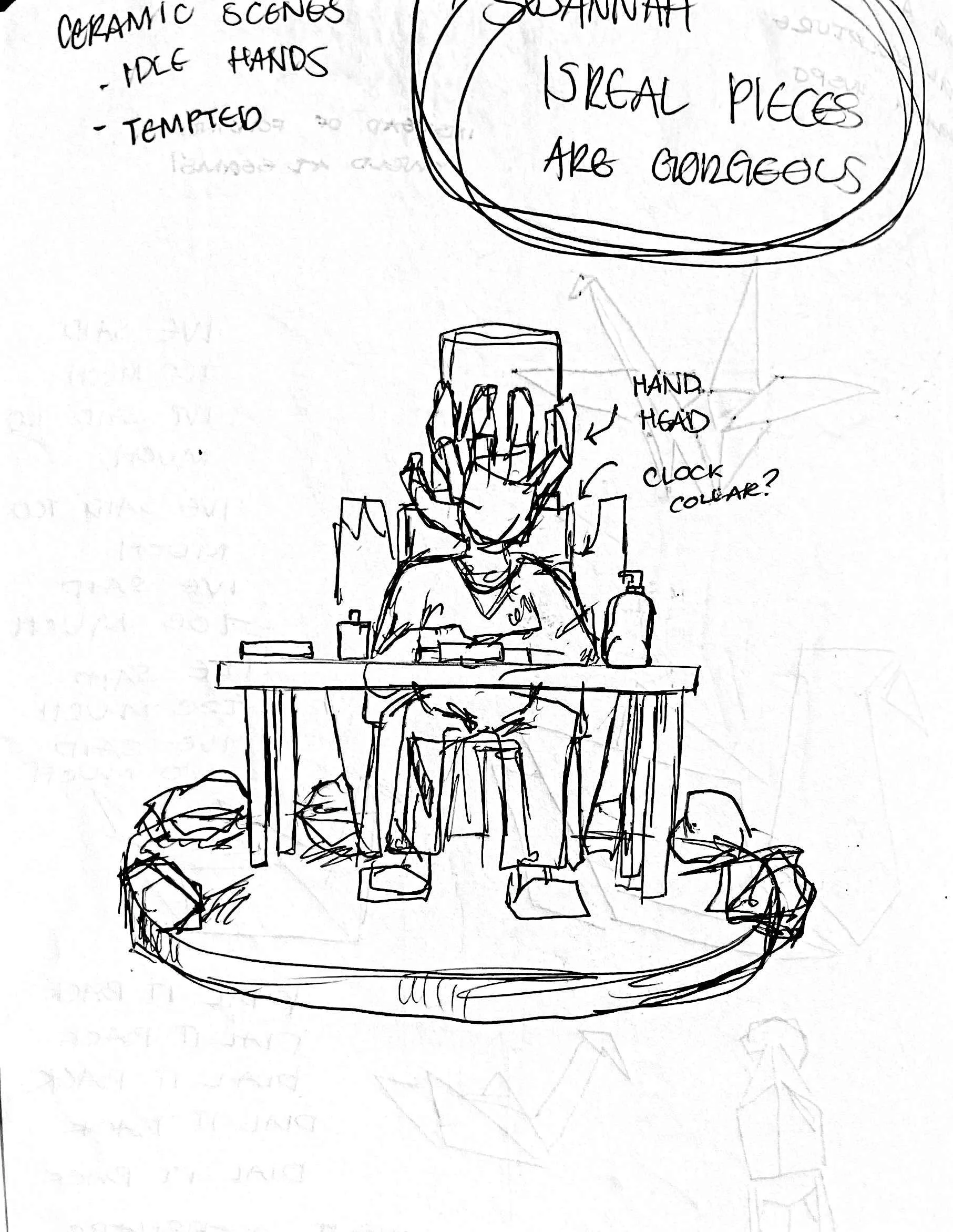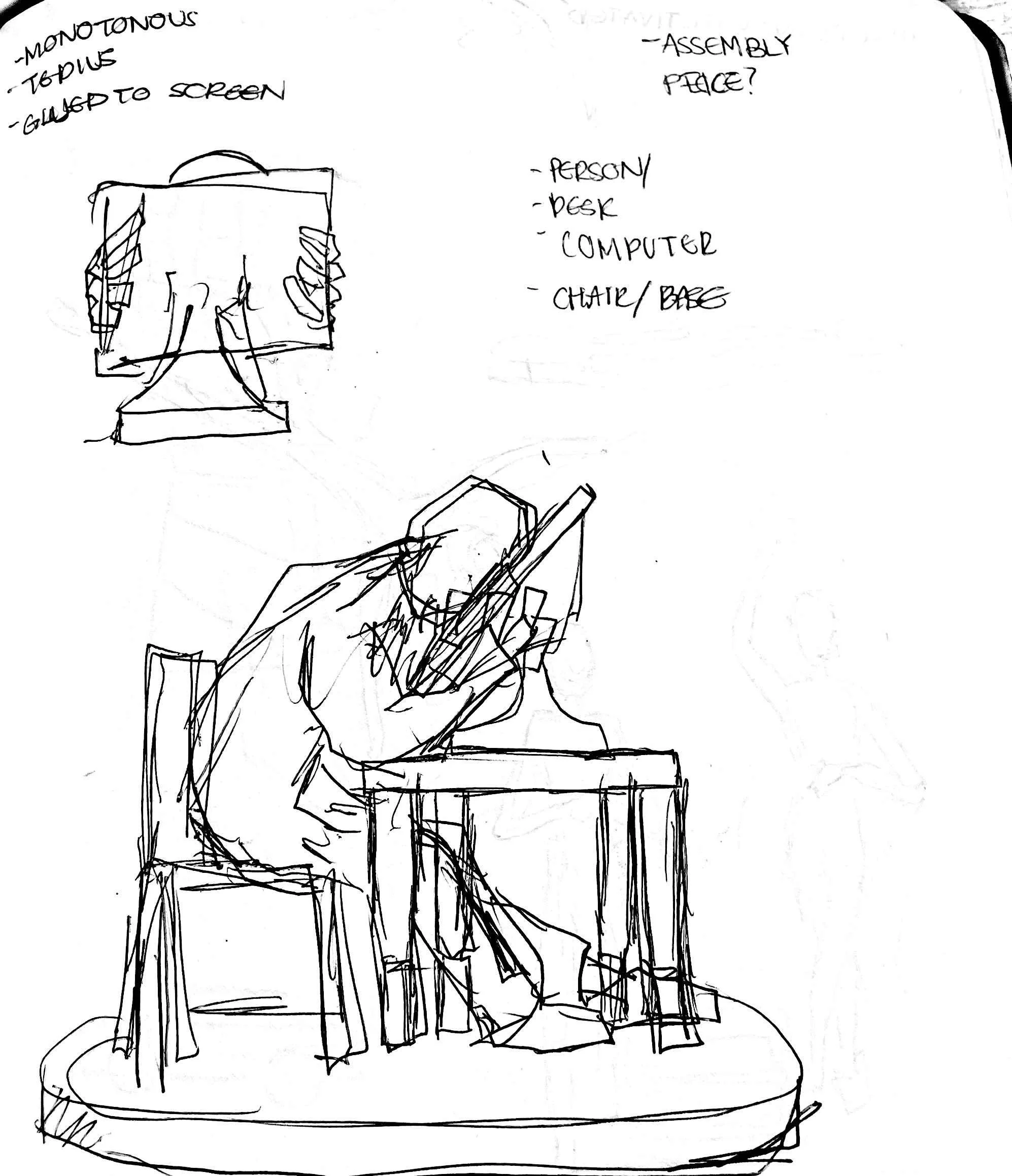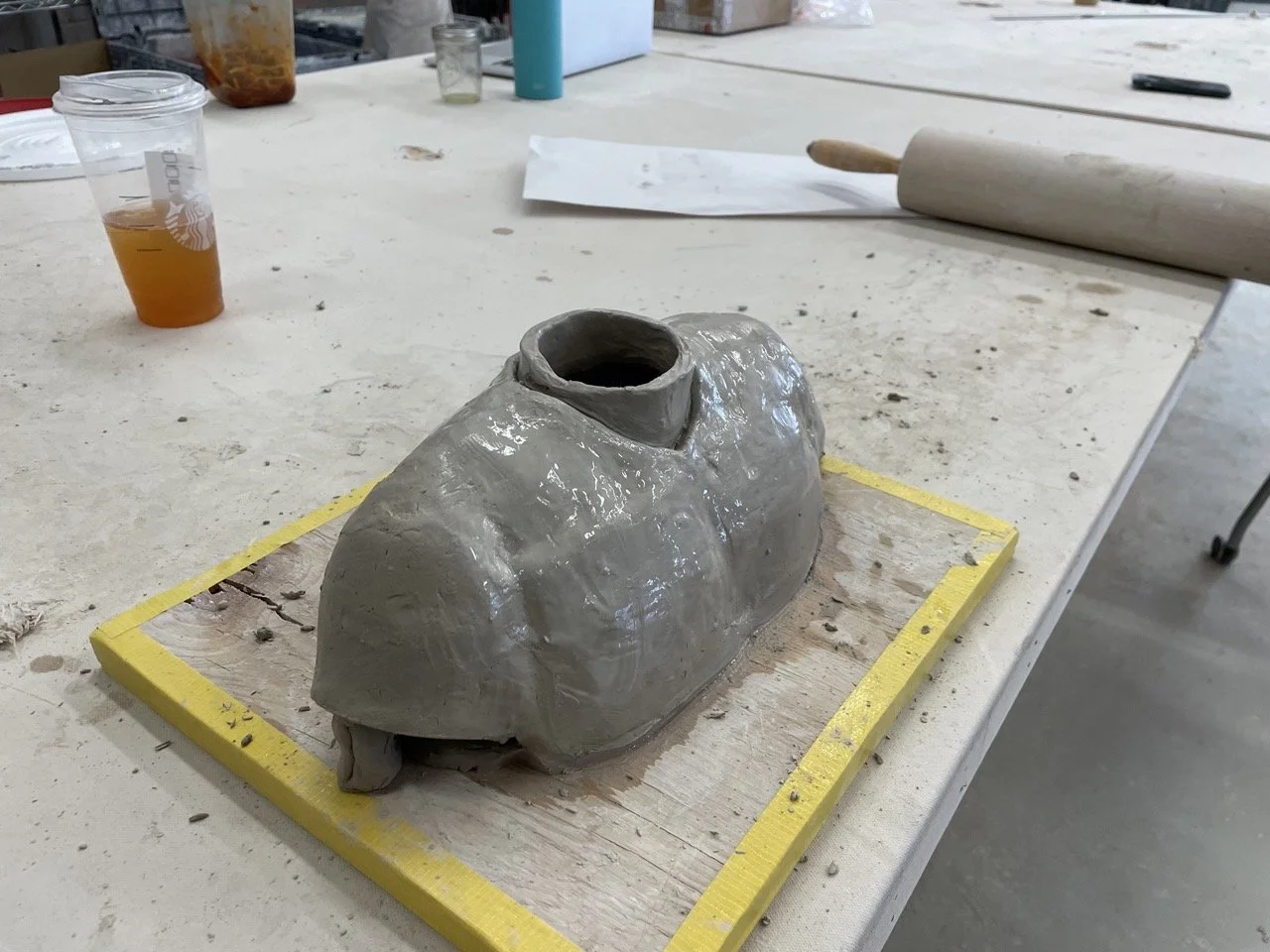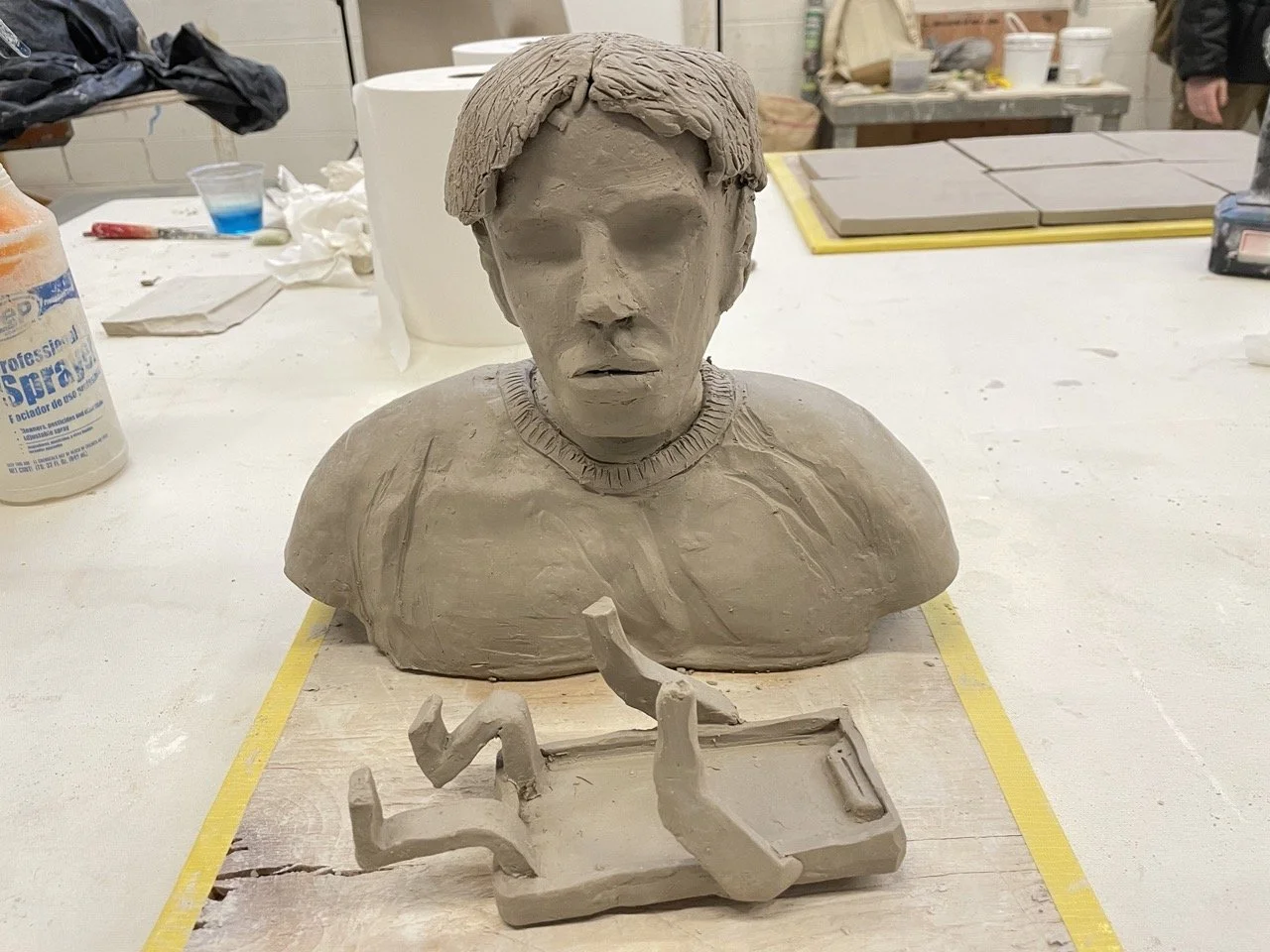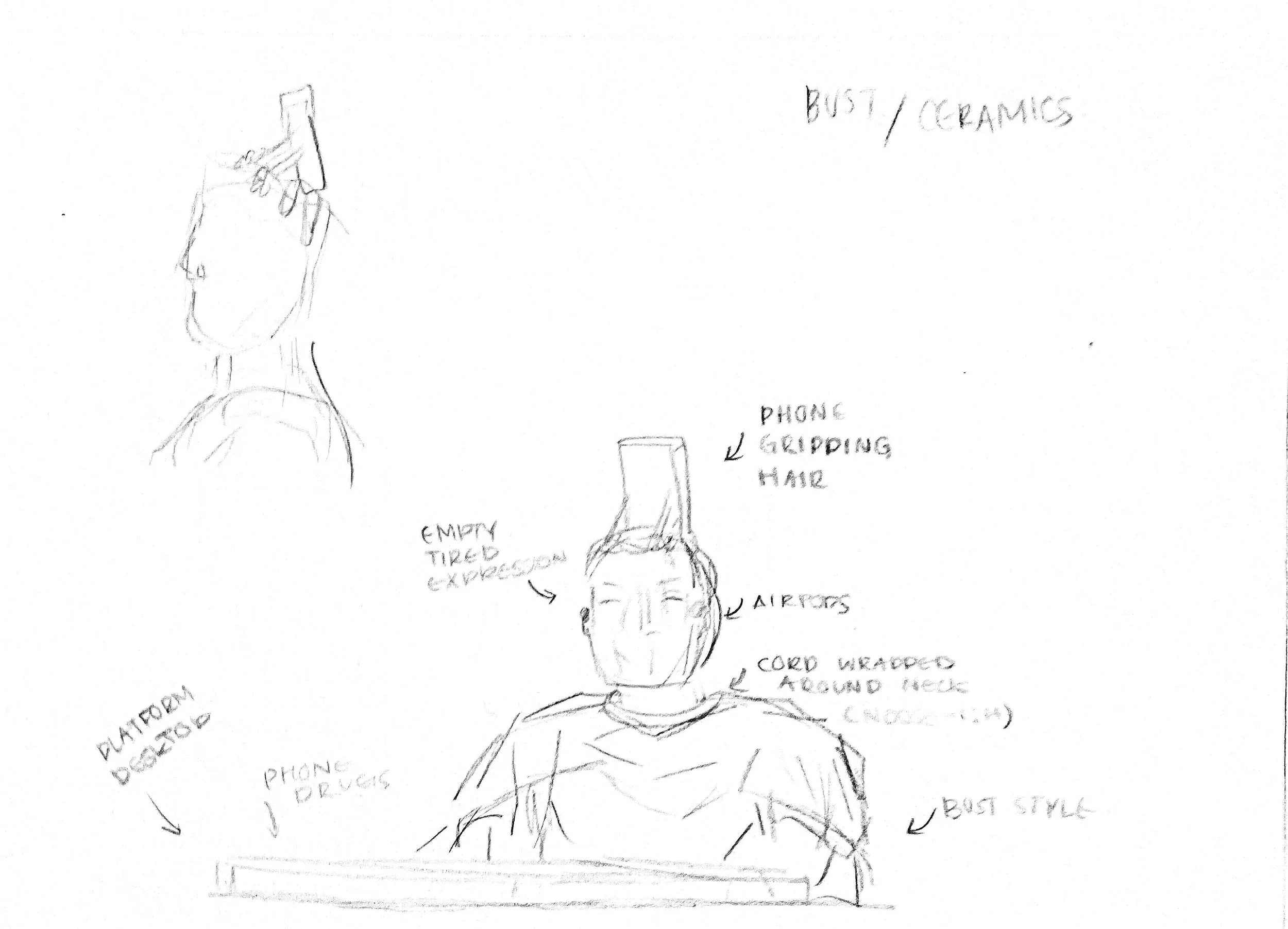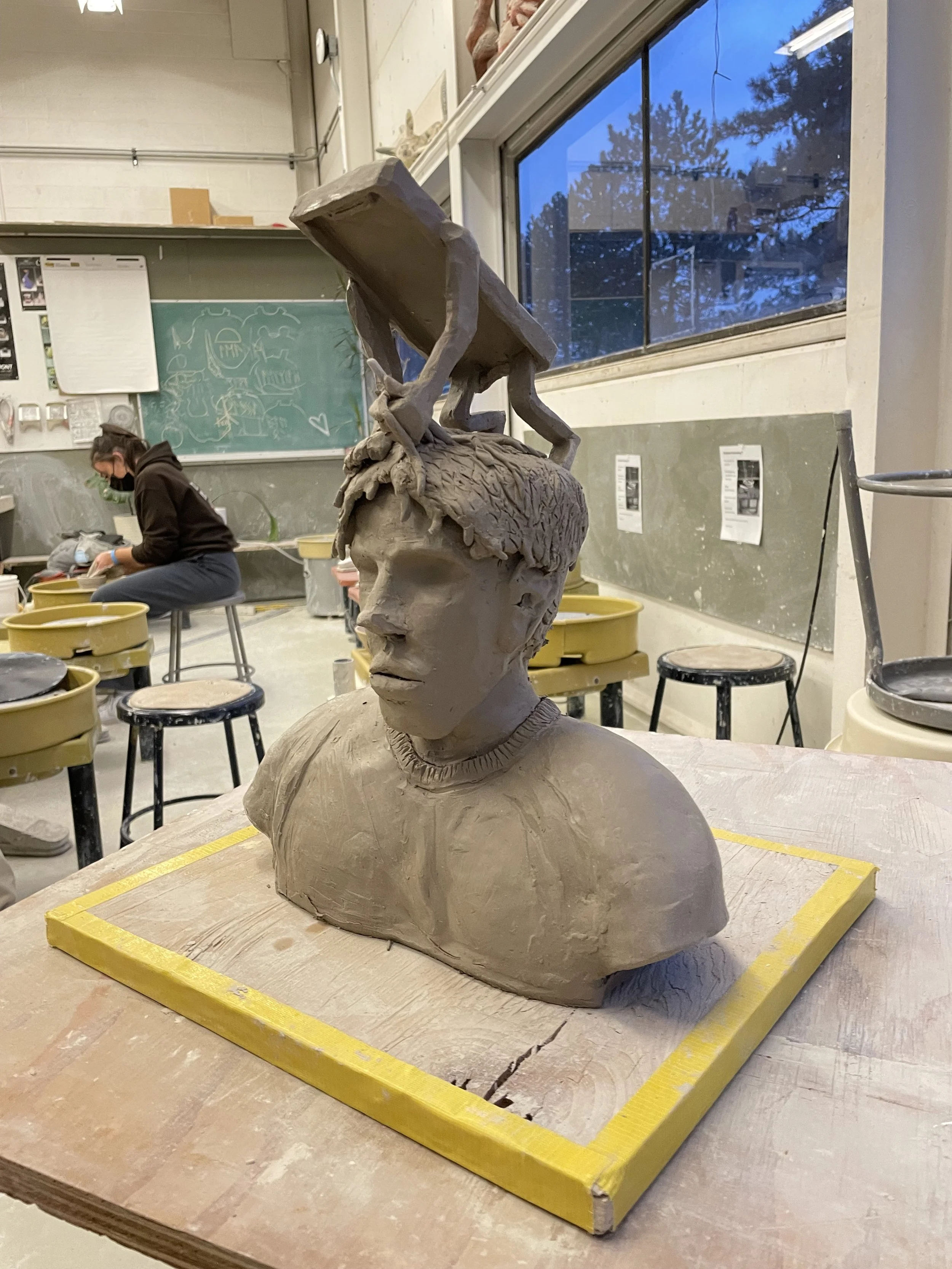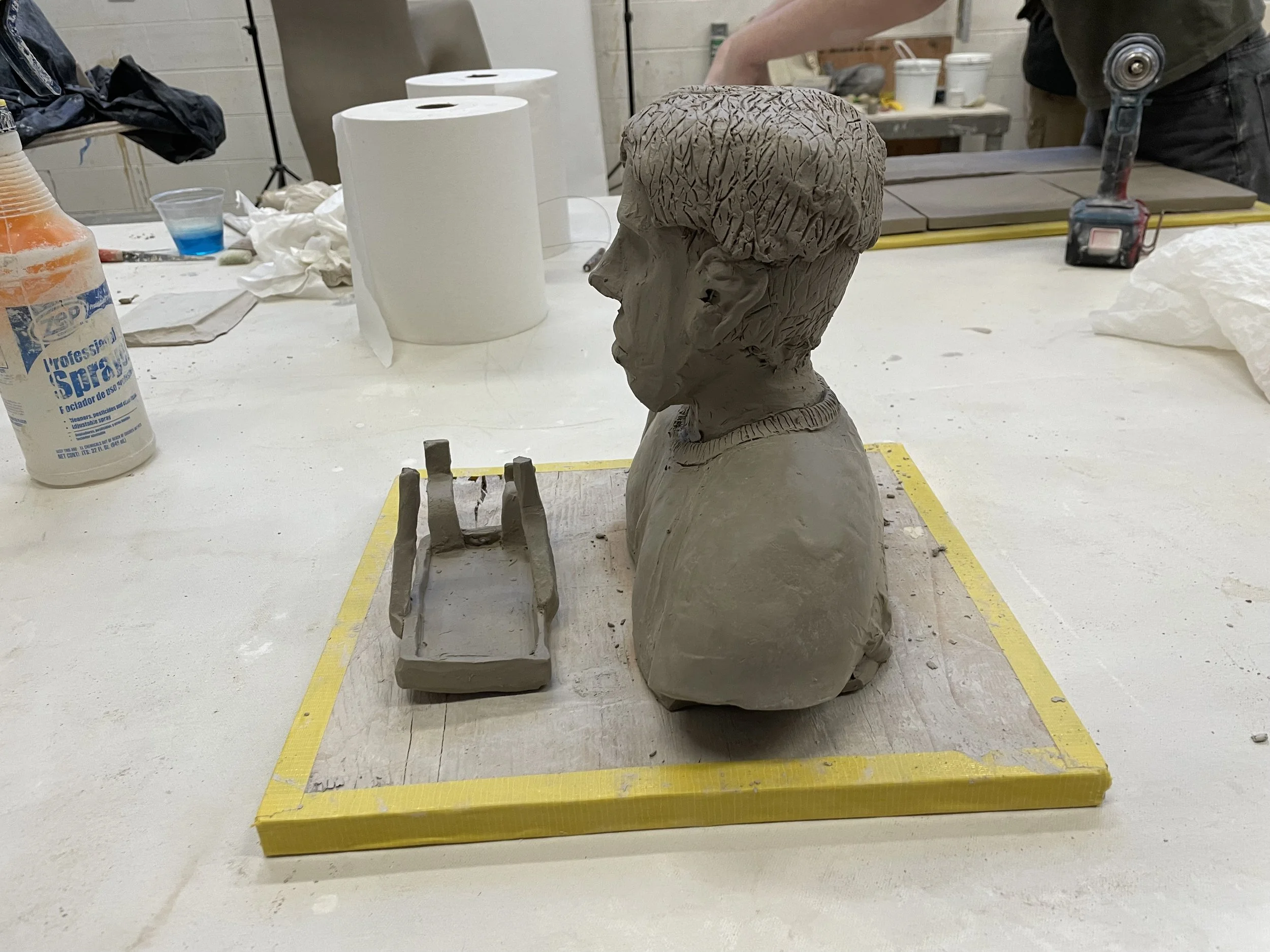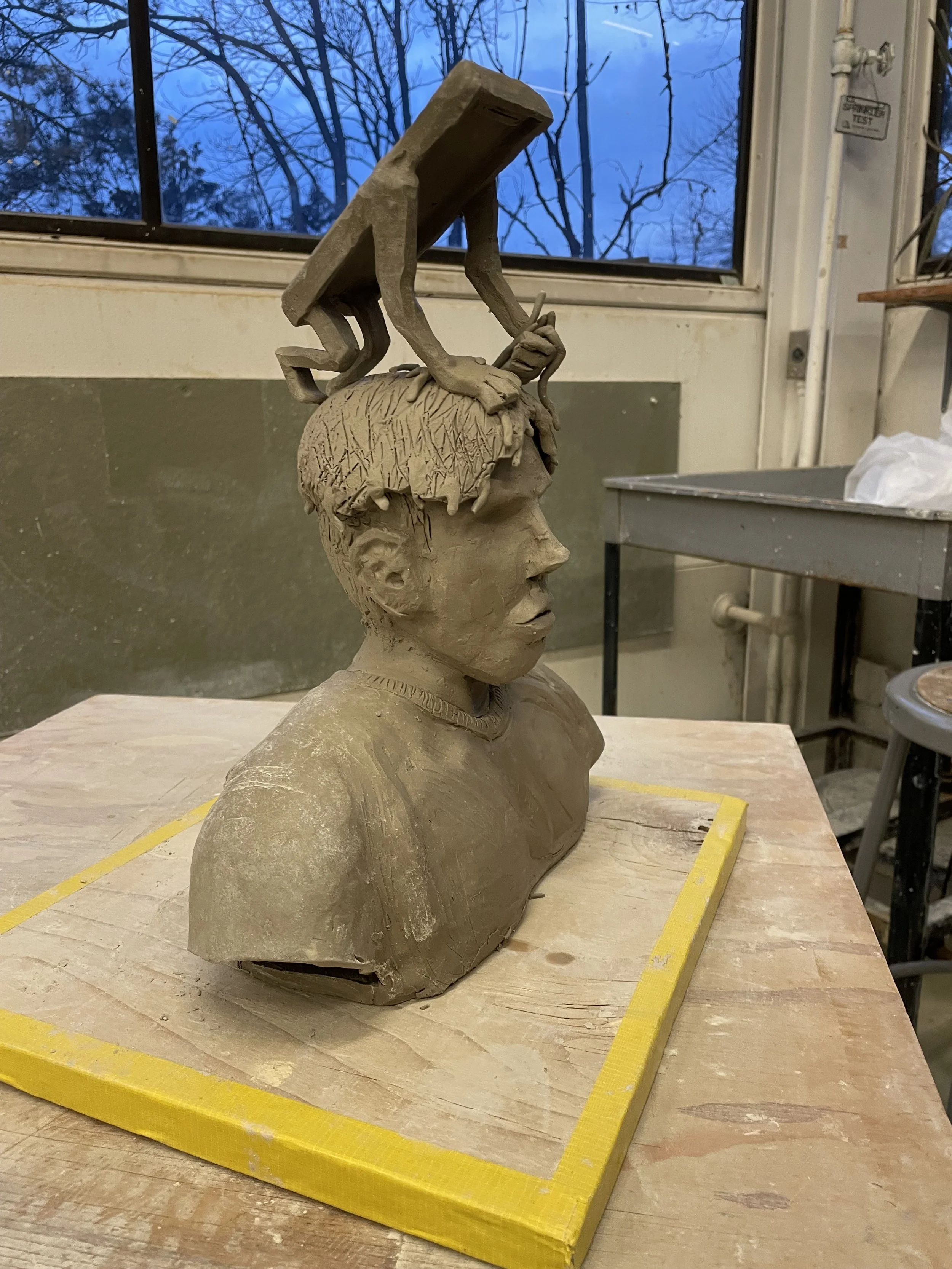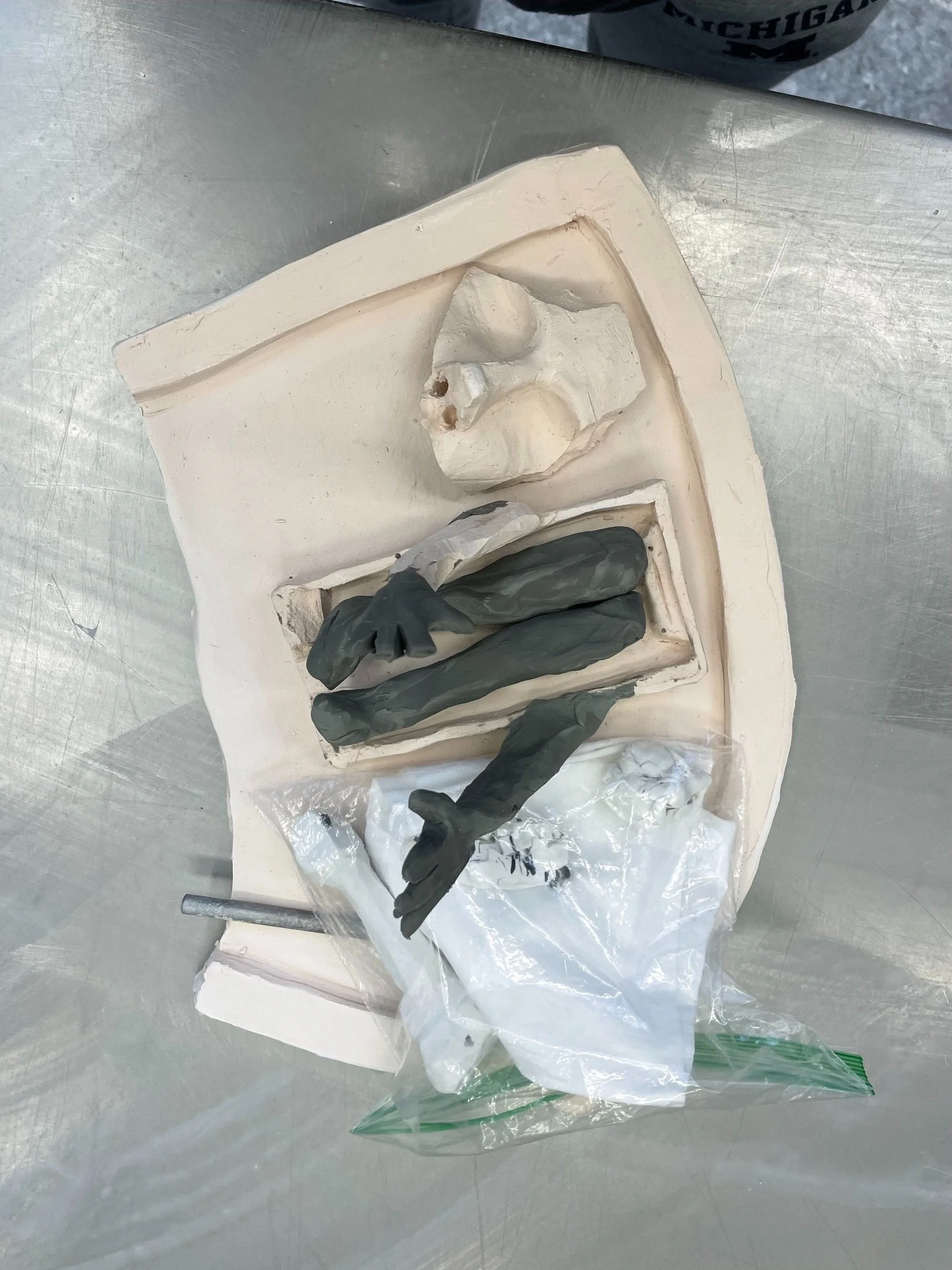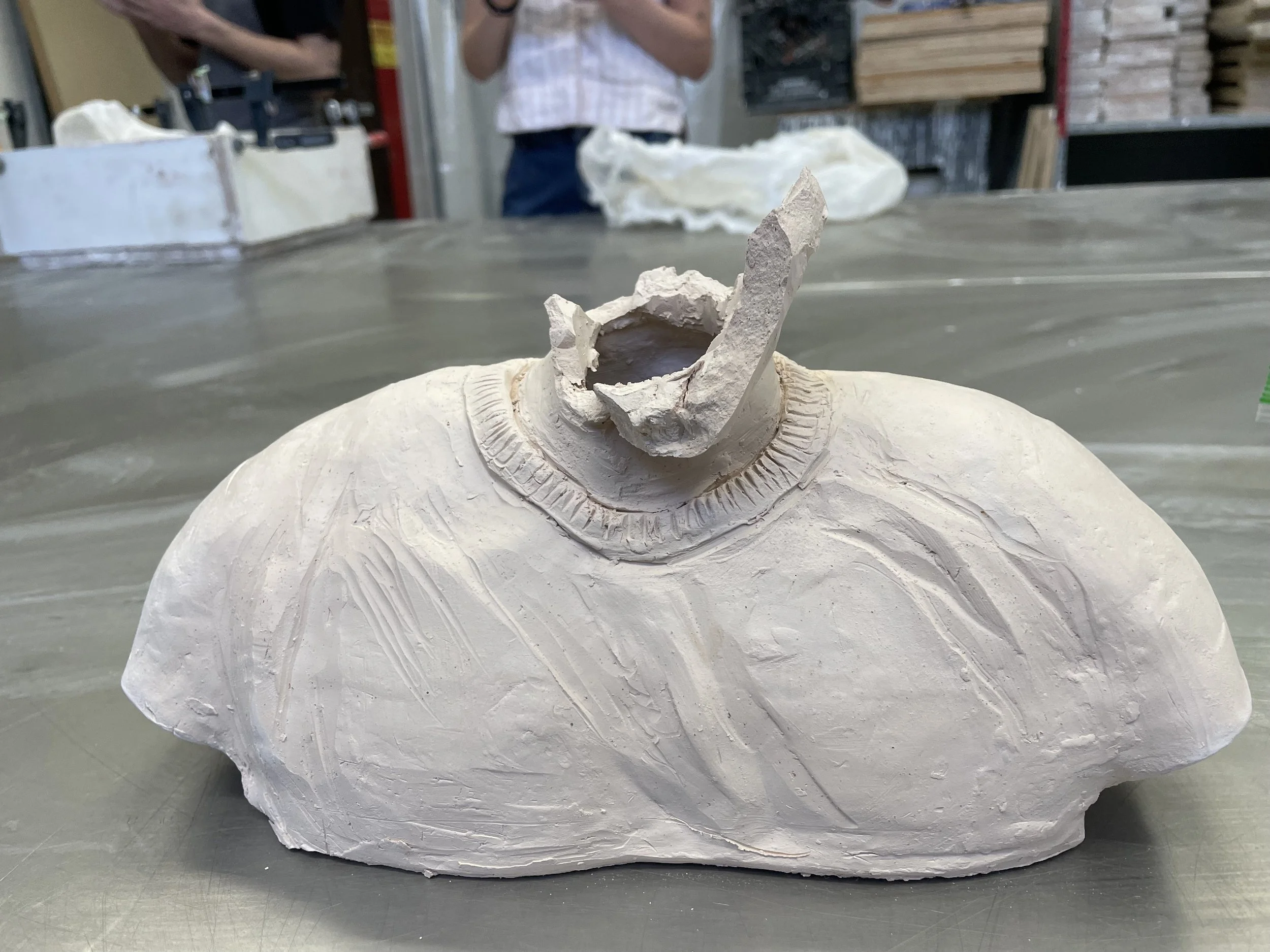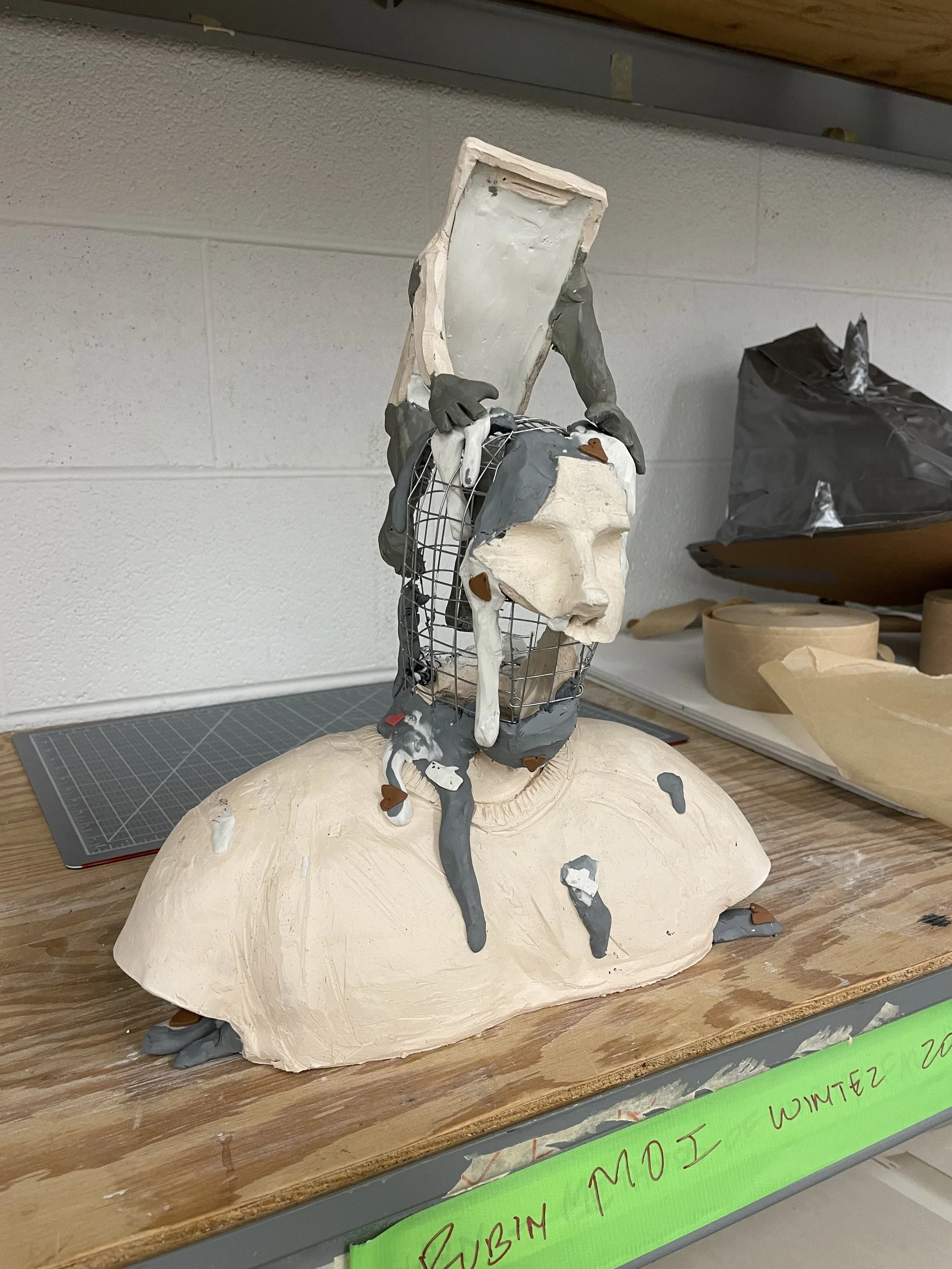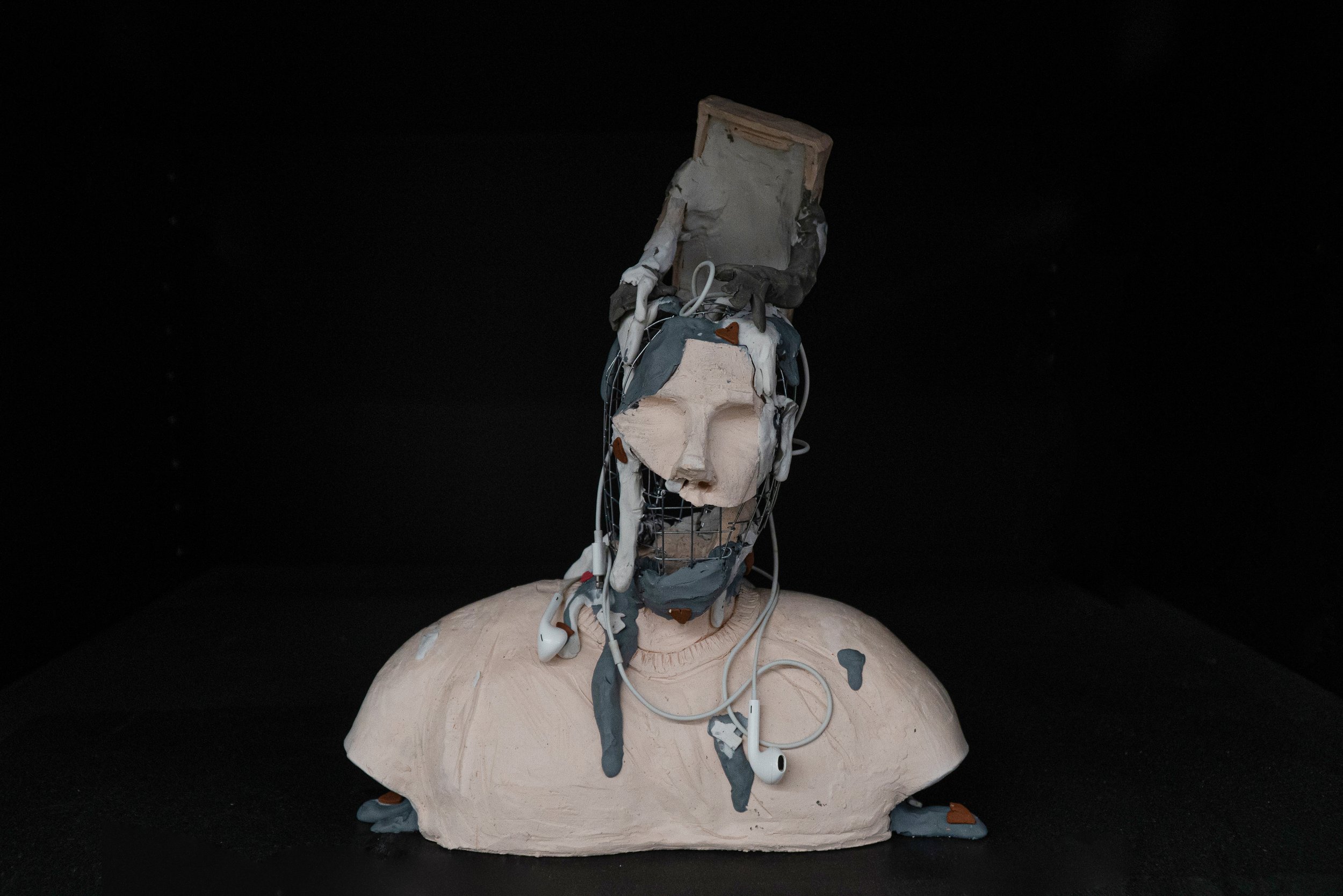
‘Chronic User’ Research Project
What does it mean to be ‘chronically online’?
This project was an intensive, multistep research project surrounding the problem of what it means to be a chronic user - a cell phone user, that is. The title is intended to highlight how many of us experience the stages of addiction with our everday use of our phones.
“500 figures in Clay”
The Brainstorming & Research Stage
Mob Mentality
Technology is extremely capable & extremely convenient
Virtually no personal repercussion
Themes -
Escapism? Distractions?
Isolation/Synthetic Socialization
Social Media Validation
Quantitative Attention
Addiction/Habits
The Construction Process
Based off of Scholary Articles:
Those who are ‘chronically online’ are people who spend so much of their time in an online setting, that their sense of reality becomes distorted, and their ability to communicate effectively becomes hindered.
This can occur for any age group, though it mostly affects teenagers and younger individuals. These screens and the synthetic socialization is not a sufficient alternative to real, physical social interaction which is crucial for an individuals development. The increasingly common phenomena of being a ‘chronic user’ is important to identify, as we have to actively work towards changing stuck habits, especially during the onset of Covid-19.
Overcoming an obstacle -
Problem:
During the construction process for this piece, the there was an explosion during the greenware firing portion of the process. Multiple pieces in the affected kiln were completely destroyed, and mine was one of those which had been broken. I was left with a shoulder bust without a face, the general shape of a phone, and the nose/eye section of a human face.
I continued on with the construction of the piece and adapted the intent of the design to fit the visual message. I gathered each broken piece of ceramic that was big enough to represent something tangible, and I revisited the sculpture with the addition of new materials - superglue, chicken wire, and polymer modeling clay.
This new form allowed me to continue to build upon the depth of the first sculpture. Initially, I created the sculpure to resemble the partnership we see in the movie ‘Ratatouille’ - though rather than a cooking rat, it would be a controlling electronic device. The connotation being that our phones have far more control over us as people than we care to reveal. Building on this, my intent was to create something that appeared as if the iphone or electronic was taking over/expressing control over the bust. When the ceramic piece broke, it allowed me to make it seem as if the user/person is hollow or empty headed. I thought this addition served the concept well because the average persons phone usage is truly melting and distorting our minds. All of this social media and fake attention is truly rotting us in some ways.
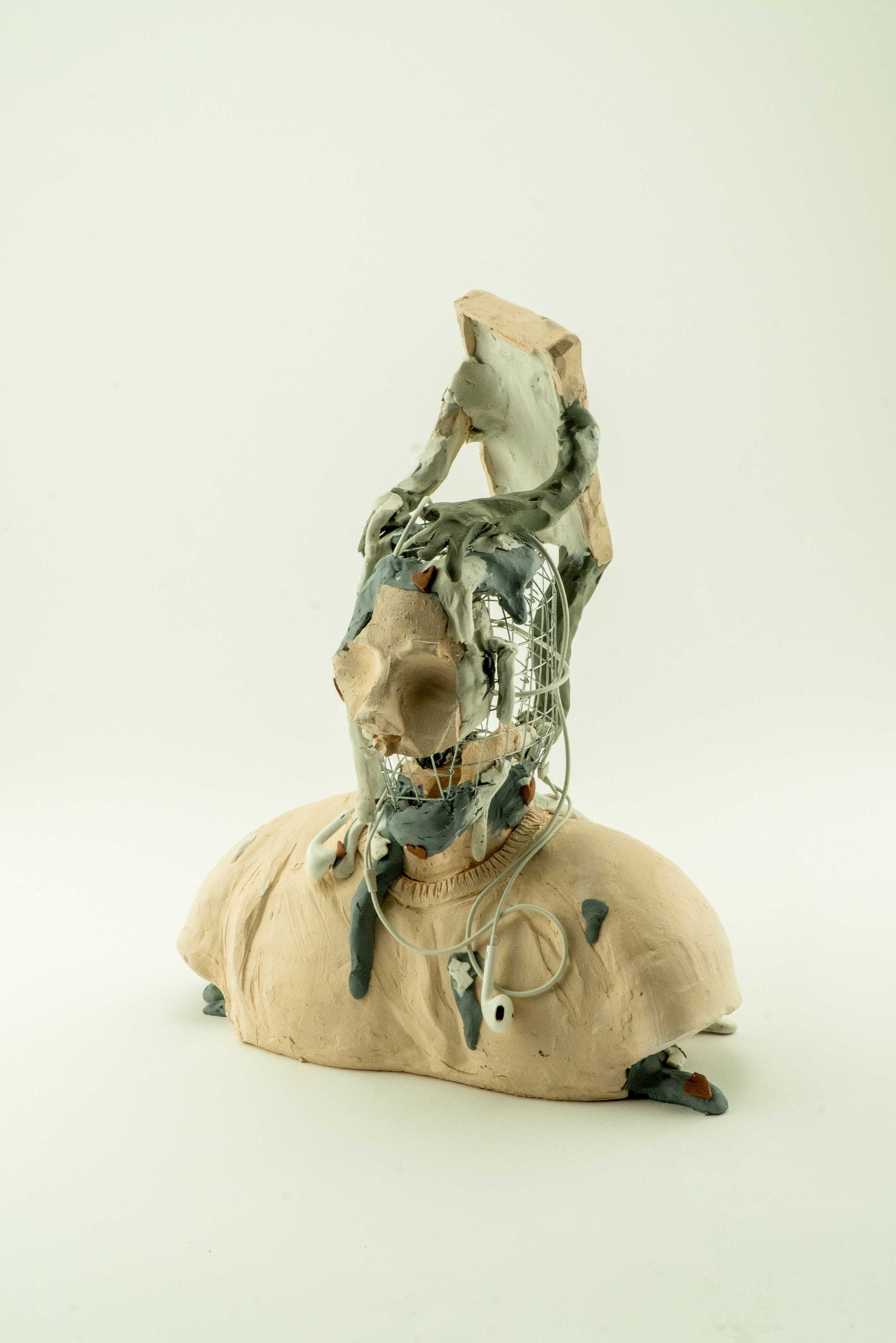
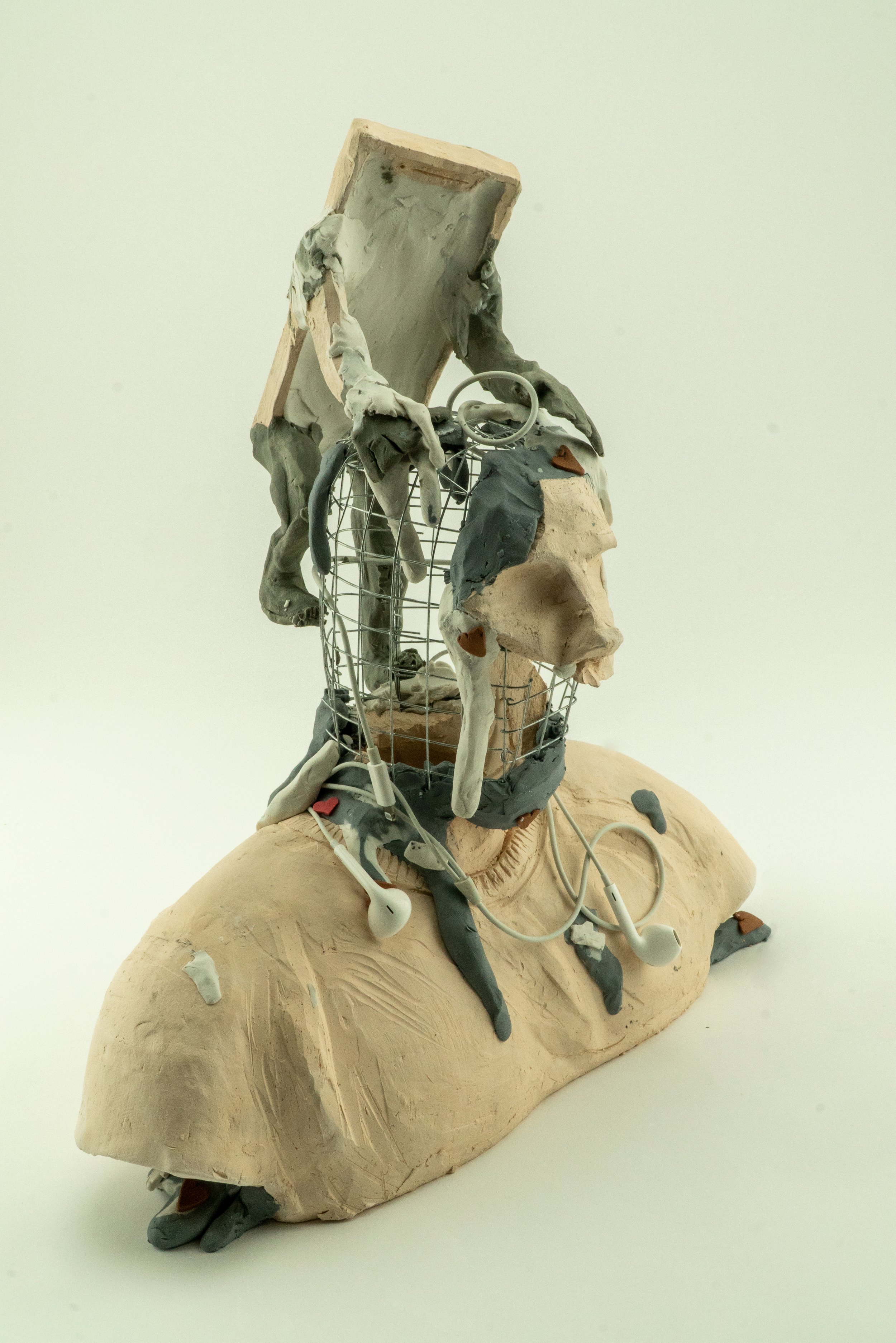

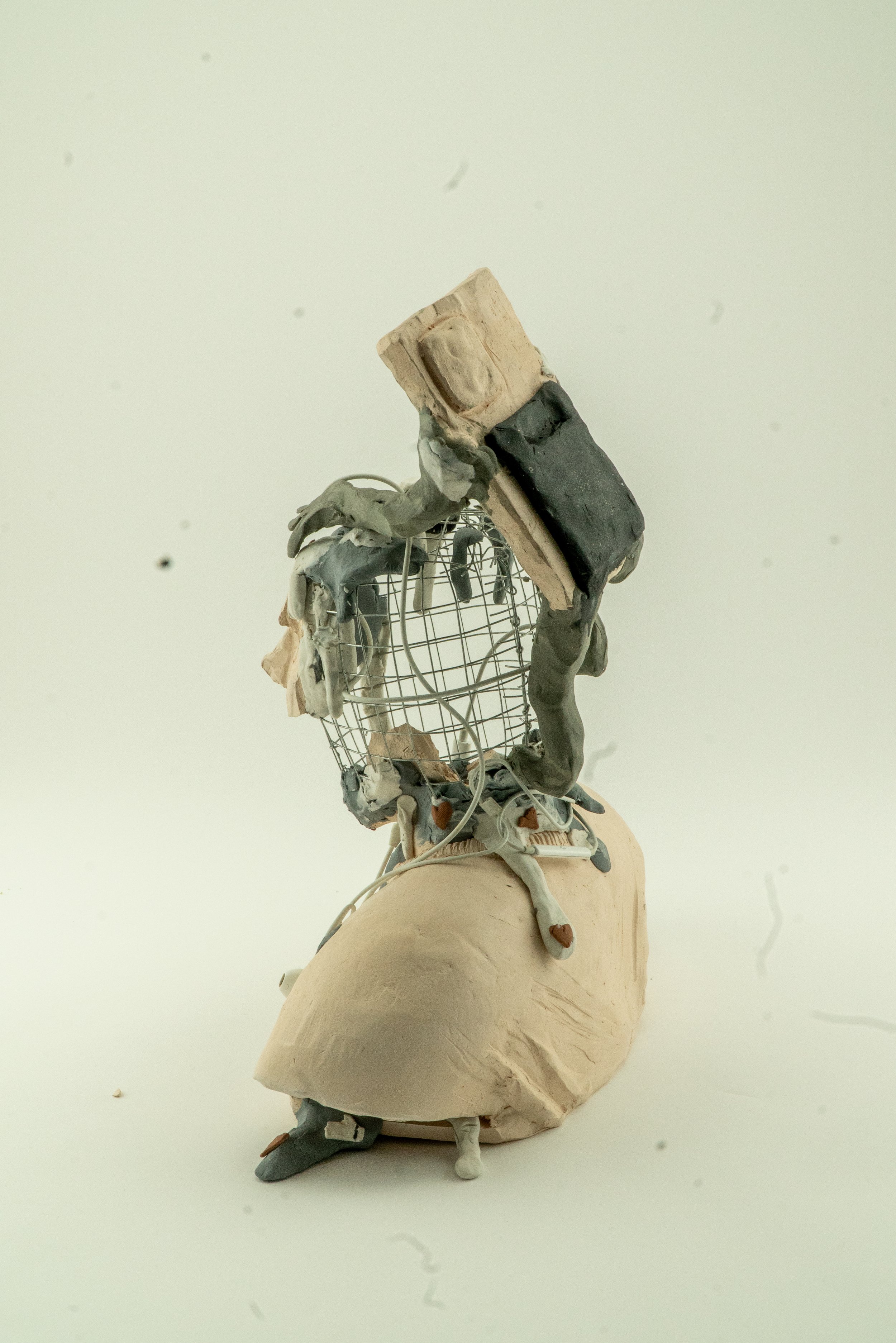


Scholarly Articles
-
By Hodding Carter III. “Viewpoint: Alar Scare: Case Study in Media’s Skewed Reality.” The Wall Street Journal. Eastern Edition, New York, N.Y: Dow Jones & Company Inc.
Skewed Reality Study
-
Kardefelt‐Winther, Daniel ; Rees, Gwyther ; Livingstone, Sonia. “Contextualising the Link between Adolescents’ Use of Digital Technology and Their Mental Health: A Multi‐country Study of Time Spent Online and Life Satisfaction.” Journal of Child Psychology and Psychiatry, vol. 61, no. 8, England: Wiley Subscription Services, Inc,
Time Spent Online
-
Ross Douthat. “Social Media and the Populist Moment.” New York Times (Online), New York: New York Times Company.
Skewed Social Media and the Populist Movement Online



